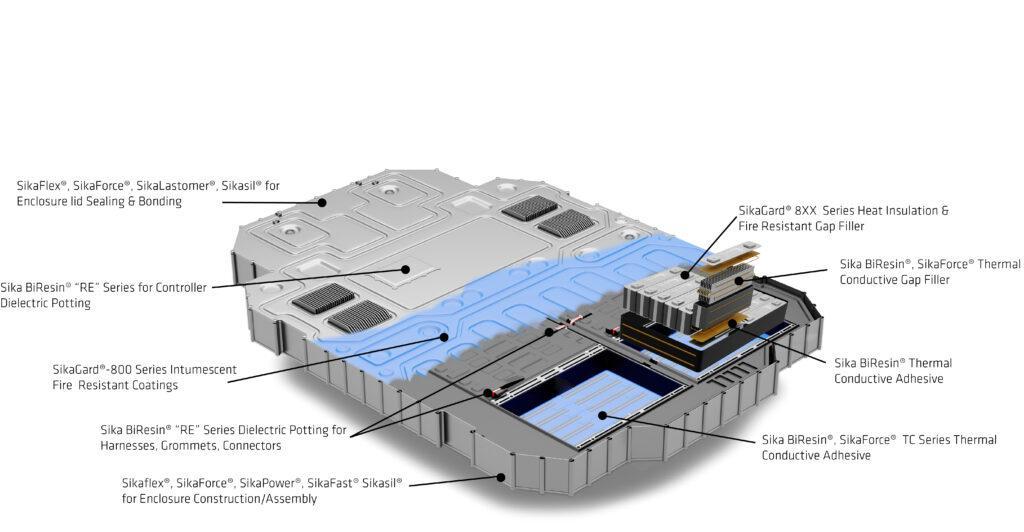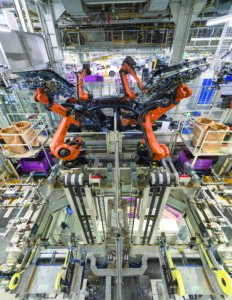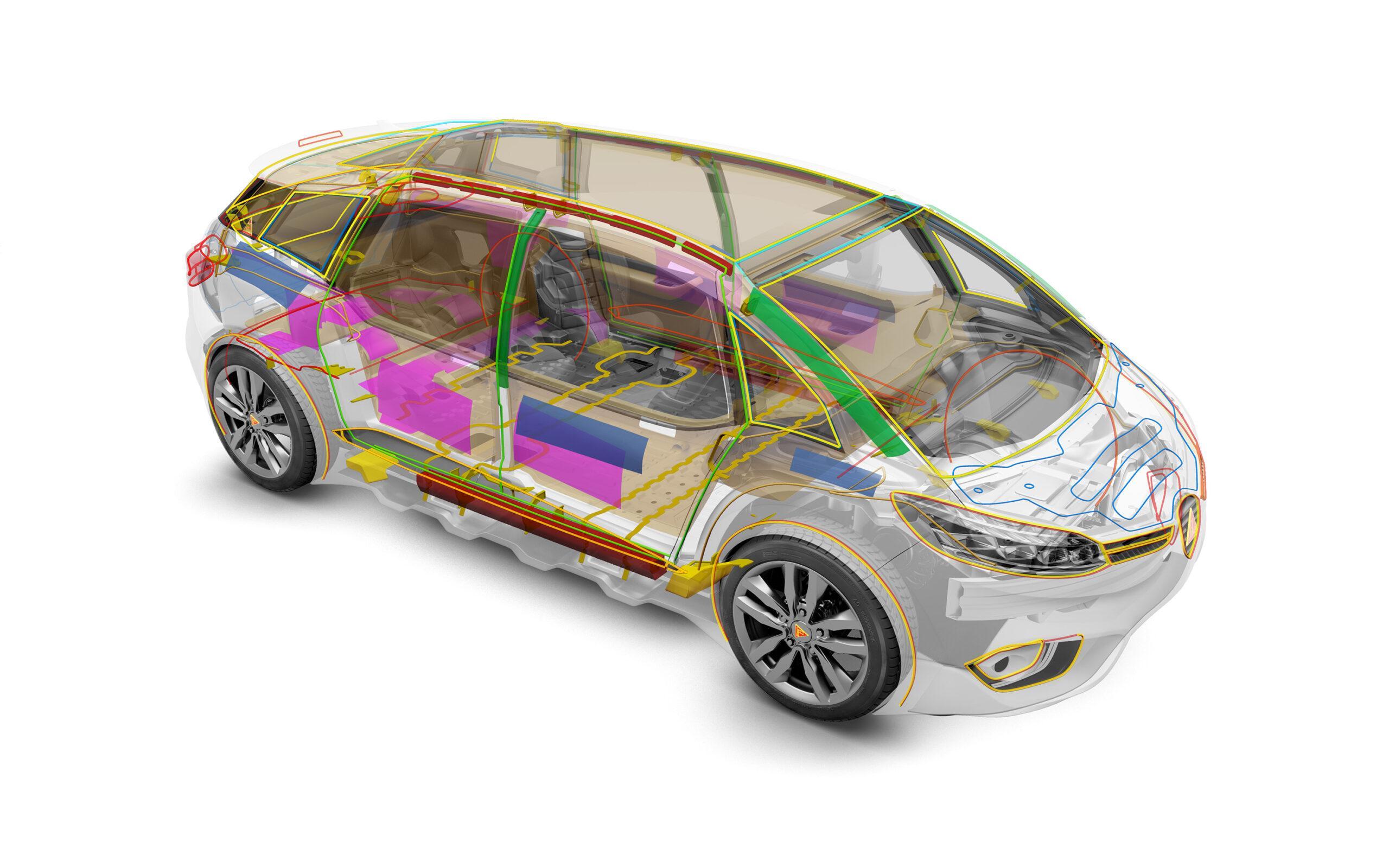
Demand for advanced polyurethane adhesives has grown as OEMs turn towards using mixed assembly of lightweight and composite materials to reduce weight.
One of the industry leaders is Sika, which “offers value-added innovations focused on addressing specific customer needs, such as comfort and safety, while reducing weight, improving fuel efficiency, and lowering emissions,” said Soundarya Gowrishankar, Industry Analyst at Frost & Sullivan in a press release.
“Its solutions for lightweighting can help achieve up to 40% weight reduction in the car body in white while saving 400,000 tons of steel each year through SikaPower® and SikaSeal®. Globally, nearly 25 million vehicles per year are lighter, stronger, and safer due to Sika’s BIW products. Additionally, more than 50% of vehicles manufactured each year use Sika products,” she added.
The company’s Purform® adhesives and sealants enhance the performance of polyurethane solutions for sealing, bonding and protection, whilst eliminating unwelcome monomeric components. This means there is no need for specialized health and safety training, according to the company.
Sikaflex® and SikaForce® Ultra High Modulus (UHM), one- and two-component elastic polyurethane adhesive provides OEMs with an alternative to spot welding or applying rigid, inflexible structural adhesives to the body structures. UHM technology allows engineers to explore innovative uses of lightweight materials, while complying with crash-resistance and safety regulations.
In 2021, the SikaPower®-550 G Structural Adhesive for automobile assembly received a Bronze Edison Award. Named after Thomas Alva Edison, the Edison Awards have recognized and honored some of the m

ost innovative new products, services, and business leaders in the world since 1987. SikaPower®-550 G adhesive combines the requirements of three separate Ford material specifications into a single product which can bond steel and aluminum.
“We thank the organizing committee and the panel of judges for the recognition, as well as our customer Ford for pushing the continued frontiers in vehicle assembly utilizing advanced structural adhesives. This award is a validation of the great work our teams perform every day to solve our customer challenges,” said Greg Moran, VP & Head Sika Automotive Marketing in a media release.
Sika’s eco-friendly direct glazing systems help to improve vehicle performance and safety, as well as manufacturing processes and cost reduction, it says. The company’s production-ready systems include pretreatment free systems for ceramic and paint, accelerated curing systems such as SikaBooster® technology, and bubble-free systems with its patented i-Cure® pre-polymer technology.
Sikagard® fire protection coating was developed for electric battery compartments. The SikaForce®-32X TC series range of 2C-PUR products enhances heat transfer between cells and module cooling plates, while making array modules stronger and lighter. They offer thermal conductivity performance from 0.8-2.0 W/m*K, high strength and excellent adhesion without surface pre-treatment to metals. All products perform to the UL94-V0 standard, according to Sika.
Automotive Industries (AI) asked Kai Paschkowski, Global Product Manager Assembly, Sika Automotive Hamburg, what makes the Purform® range stand out.
Paschkowski: Purform® adhesives and sealants combine the best mechanical performance with excellent adhesion to a wide range of materials, superior durability even in harsh environments, and top-class UV resistance. Compared to alternative sealant and adhesive technologies such as silane modified polymers (SMP), silicones, acrylic dispersions or polysulfides, polyurethanes are better at balancing the different aspects of specifications and needs. The Purform® technology shows that it is possible to combine performance and sustainability. The ultra-low-monomer content of monomeric isocyanates shows excellent performance, while protecting the environment.

AI: What are some of the “green car” technologies that Sika has in its repertoire?
Paschkowski: The electrification of our industry brings challenges but also benefits to sustainability initiatives and opportunities. Sika’s response to the need for technologies for bonding and sealing in new energy vehicles draws on over 100 years of experience and innovation, as well as our vast product range serving markets around the world.
Sika has focused on the specific application, substrates, and functionality requirements of the material used for assembly, while adding value in vehicle performance and assembly techniques. Sika solutions run deep into the heart of components while also answering the call for specialized assembly and functional needs in the construction of cooled/heated full battery packs and drive “sleds”.
The SikaBiresin® TC-4XX series is used for thermal conductive gap filling applications and serves as a functional interface with the battery arrays. It supports heat transfer (cooling and heating) by actively engaging battery temperature control systems. It is available in silicone and silicone-free formulations.
In the future adhesives need to offer additional functionalities. Bonding with heat conductive adhesives will be more and more common as a key target is to reduce the number of components inside the battery to win space for battery cells. The adhesive must be able to both bond and manage heat transfer.
The closing of the battery pack, also called battery lid sealing is another core Sika competency. Here, we are also helping to simplify maintenance operations by providing non-permanent bonding butyl-based sealing systems from our SikaLastomer® range.
AI: What other products does Sika have for EV battery packs?
Paschkowski: Sika offers the broadest range of products in the industry. We continue to develop new bonding solutions that overcome challenges such as adhesion to plain metals, plastics and composites while offering heat and glycol resistant solutions.
Accommodation of the constant delta-alpha effects is solved when joining multi-materials under cold assembly process conditions. We have a broad range from which to select. It includes one-component, two-component and boosted PUR, silicone, STP, MMA, epoxy, hybrids, hot-melts, and PSA. The products offer flexibility in the manufacturing process and throughput targets, as well as industry leading properties performance.
AI: What have EV manufacturers had in Sika’s battery-related technologies?
Paschkowski: China is the first country to have issued binding fire protection standards for battery casings. Sikagard® fire protection coating helps customers to not only to meet, but to exceed the standard.
Heat builds up in a battery when the cells are generating a lot of power, are being charged rapidly, or there is short circuit. This can result in a fire. The same is true if a battery is damaged in an accident. Effective fire protection is therefore hugely important.
Together with Chinese bus manufacturers, Sika developed a lightweight solution for delaying the spread of fire and toxic smoke in battery packs for as long as possible, thereby making electric buses safer. Since 2017, with the large increase of EV builds, the Sikagard® intumescent coatings have been used in Chinese-made electric cars. Their performance exceeds China’s regulatory requirements for battery casings.
In addition, batteries and battery pack assembly has hi-tech needs beyond fire-protection/mitigation. It is here that Sika products contribute to “under the lid” performance. Manufacturers must address sealing and bonding, insulation, heat transfer, glycol resistance, selective reinforcements in enclosure design and assembly, flame retardancy and maintain efficient assembly processes.
There is great interest for Sika products in this fast paced and dynamic application area. Discussions and design with OEMs and Tier manufacturers reveal both similar and uniquely different needs. Our full product range for e-mobility provides solutions to the multiple challenges presented.

AI: What are the reasons for the recent Sika acquisition of a Japanese sealant and adhesive manufacturer?
Paschkowski: Sika has acquired Hamatite, the adhesives business of The Yokohama Rubber Co.
Hamatite is a market leader in Japan, offering adhesives and sealants to the automotive and construction industries.
The acquisition will significantly strengthen Sika’s market position in Japan and North America, increase market access to all major Japanese OEMs, and notably extend the product offering for sealing and bonding applications in the Japanese construction industry.
The strengths of Hamatite also allow for the further growth of Sika products in multiple markets. Hamatite and Sika are a winning combination.












More Stories
Is Your 70 Series Land Cruiser Underperforming? Here’s How to Unleash Its True Potential
What to Do After a Motorcycle Accident to Protect Yourself
Injured in a Motorcycle Crash? Talk to an Attorney Now